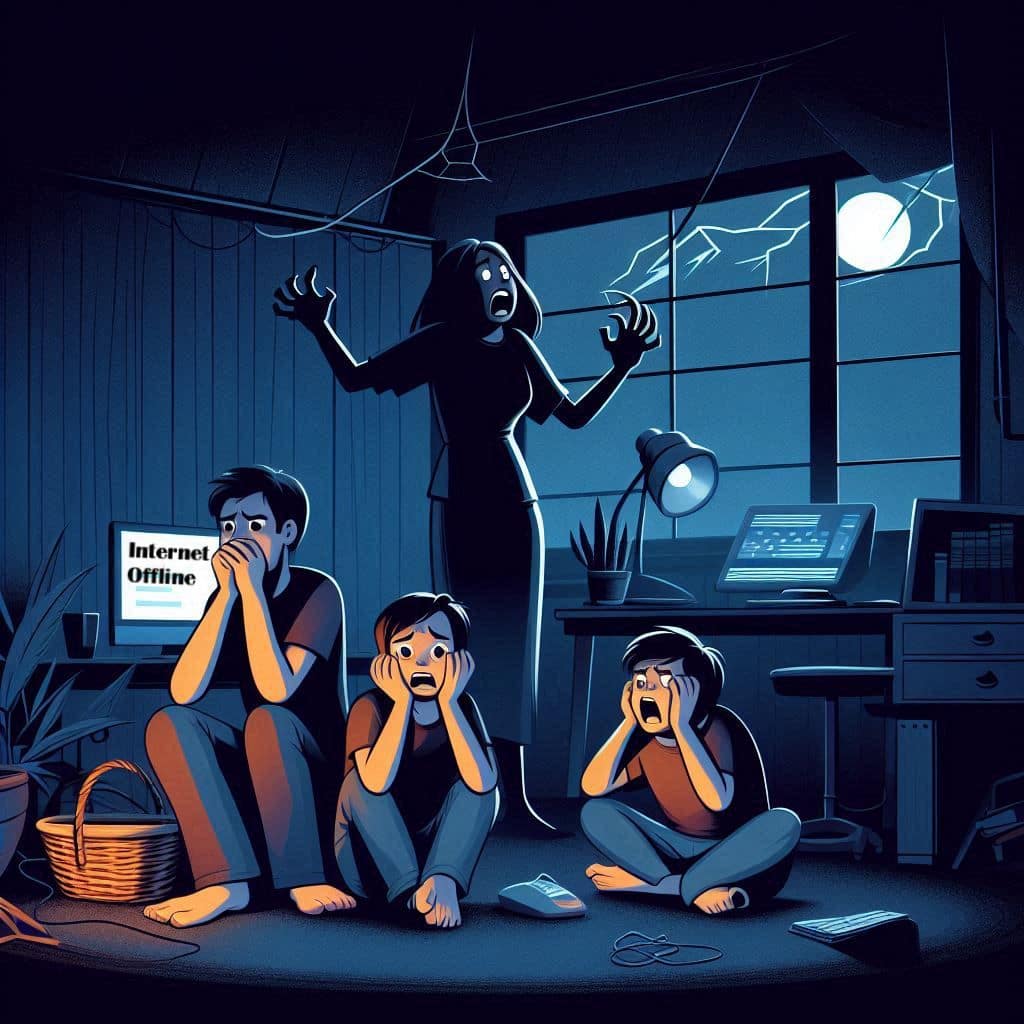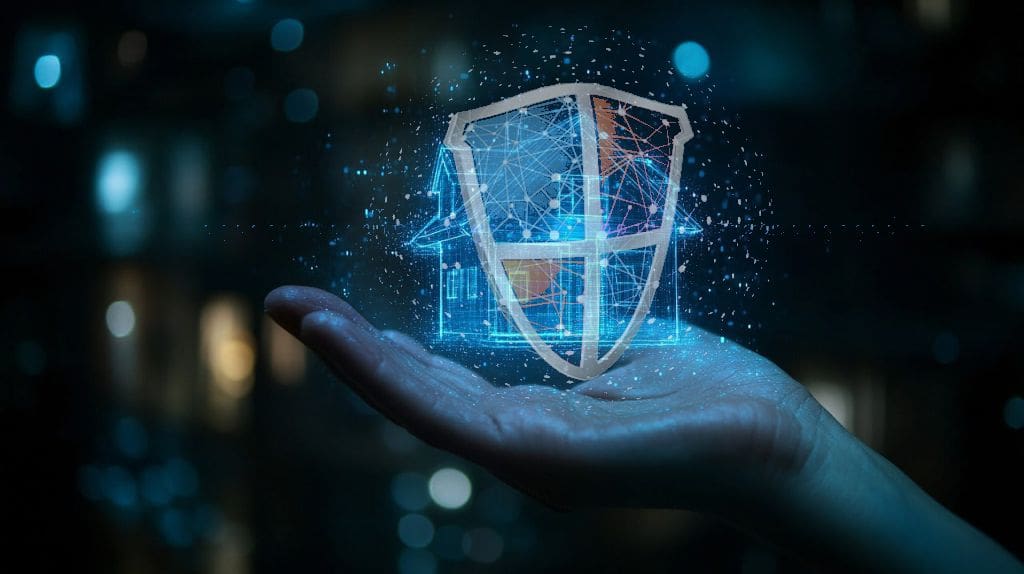Smart homes bring much convenience and automation, but needless to say, they rely on electricity power and Internet connectivity. Unfortunately, these two essential utilities that we depend on so much in modern life will occasionally face disconnections.
Many homeowners refuse to upgrade their home to use smart technology because they assume that power or Internet outages will cause many problems in a smart home. However, the smart devices in a smart home can still remain reasonably functional if it is just a short outage.
So, here is a guide that would help smart home owners prepare for situations when there is no power or Internet.
Use A Backup Power Supply
You can easily find a wide variety of UPS (Uninterruptible Power Supply) in computer and hardware stores. They can be very useful in the event of a sudden power disconnection.
I’d also add that UPS are great stress reducer tool when the power suddenly goes out. In fact, a UPS is a must-have device if you are always working on something important on your desktop computer. You should connect your UPS to your router and smart home hubs to keep them continuously running during short power outages.
As an alternative, you can also consider a portable power stations (PPS). Using a PPS however means your Internet will be disconnected until you plug-in your router and hub into the PPS.
Here’s a detailed article by CNET on Portable Power Station vs UPS: How to Pick the Best Backup Power Option.
If you have the budget and feel like taking on an extensive project, you can even consider installing a home battery that stores excess electricity generated by solar power.
Switch To A Secondary Internet Connection
One way to prepare for an Internet outage is to have a secondary connection as a backup to keep your smart devices online. This could be your mobile hotspot from your smartphone or a cellular router.
You should bear in mind though that your mobile hotspot connection may not be as stable or fast as your home broadband connection. Therefore, you should not expect your smart devices to be fully functional when using the secondary connection.
Note that some of your smart devices may consume a high volume of data e.g. the video feed in your security camera. It is thus important to monitor your mobile data usage if you are on a limited data plan. Nobody likes to be shocked by an unusual high phone bill.
Next, you should take note of the critical smart devices in your home that require a Internet connection to perform its basic functions. This could be your smart home hub, smart locks and some of the more important lights and security cameras in your home.
For those critical smart devices, check if the settings allow you to seamlessly switch to the secondary Internet connection when the primary connection is not available.

Smart Home Automation Free Course
You can learn the essentials of setting up a smart home in this free course by Smart Home Schools in partnership with Alison. You only need to pay if you need the certificate and I may get a commission as an affiliate.

Internet Down Backup Plan For Your Smart Home
Check Your Smart Devices For Local Or Offline Controls
The other thing that you should do is to check if your smart devices support offline functionality. Typically, the Internet connection is only required for remote access and voice control.
You can start with checking if your smart lights and plugs come with physical switches. If they do, the switches should allow you to still operate the devices offline.
One of the misconceptions about smart lock is they will not work at all when the Internet is down. However, there are actually many smart lock models that support Bluetooth, which is independent of your WiFi or Internet connection.
So, for Bluetooth smart locks in general, you should still be able to open it with your programmed pin codes, key fobs or other methods even when the Internet is down. There are also smart locks which come with a backup physical key.
It is also common for smart locks to be powered by batteries rather than electricity. This feature ensures that you will never be locked-out or locked-in of your own home in the event of a power outage. This means you must always remember to check or change the batteries on a schedule.
Finally, please note that smart home hubs such as Google Home or Alexa are likely to not be functional if they are not connected to the Internet.
You should therefore prepare an emergency plan on how to operate your critical smart devices independently without your smart home hub.
Create A Smart Home Recovery Plan
Have you ever thought about what would happen to your smart devices if there was a big storm that renders all the electronics in your home dysfunctional?
Here’s a list of important things you could do for your smart home if such a situation happens.
Password Management
I hope you are well aware of the need to use unique and complex passwords for each of your smart device. It is an essential data security step that helps to reduce hacking risk in your smart home.
You should store your passwords in a safe place like a secure password manager software that you can access offline.
You should also tell members of your household that you trust where to find the passwords in case you cannot be present at home when an emergency happens.
Make Backups Of Your Smart Devices’ Settings
Backups are basically snapshots of your system’s settings and configurations.
In the event of a system failure or data loss, taking regular backups gives you the ability to quickly restore your preferences and settings in your smart devices to its previous state.
You should think about how to store your backups securely, e.g. store them on a USB storage device that you can easily access without the need for the Internet. This means not storing the files in your cloud folders.
Know How To Reset Your Smart Devices
It is fairly common for smart devices to encounter occasional glitches. For example, an update may cause the device to not be fully functional.
When this happens, it is important to have detailed instructions on how to properly reset your devices. Like a Windows PC, your smart device may come with multiple options on how to do a partial or full reset.
Remember that all your smart devices are interconnected on your home network. So, you must know how to resolve problems that may appear in your other smart devices when you reset one device.
Test Your Smart Home Recovery Plan
Lastly, you should consider testing out if your smart home recovery plan actually works.
For instance, you can make an appointment with qualified technicians to be present while you disconnect the electricity and Internet connections. That way, you have an expert on hand to help guide you to resolve any problems that appear.
When you simulate an emergency, you also get to jot down notes on the types of errors and problems that transpired in your smart device. The notes will help you to remain calm and orderly when an emergency really happens.
Tech Tip: Pay heed to your data privacy.
A lot of what you do online is tracked! There is no way to completely block or avoid all Internet trackers, but you can at least use a Virtual Private Network (VPN). Use my affiliate link below to get an offer and I may get a commission if you make an online purchase at Namecheap’s website.
Work from home with a secured connection with Namecheap FastVPN.
Conclusion
As a smart home owner, you must understand that electricity and internet outages can disrupt the efficiency of a smart home.
This is the reason why you should prepare a plan on how to resolve technical problems that can appear in your smart devices. Having an effective backup plan helps to minimize inconvenience as well as time and cost too if you can resolve the problems by yourself without needing to call-in experts.
Among the steps recommended in this post are:
- Invest in UPS (Uninterruptible Power Supply) or portable battery stations.
- Switch to a secondary Internet connection.
- Check to make sure your smart devices can still operate offline.
- Test your smart home recovery plan for effectiveness.
By planning ahead, you can enjoy the benefits of a smart home with fewer disruptions. With an effective backup plan, your smart home can be ‘smarter’ even during an emergency.






